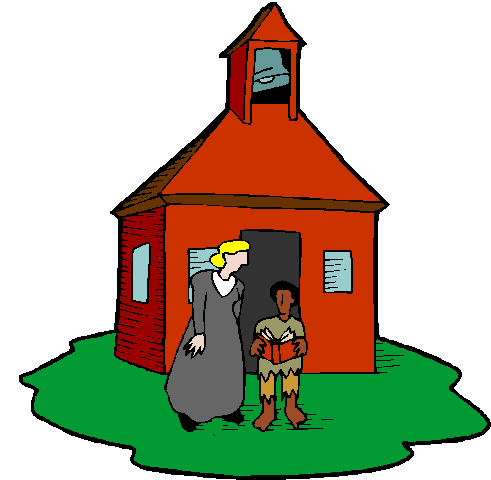
Science

Click on a month to go to current subjects.
Please remember that schedules often need to be adjusted to meet the needs of the classroom.
September October November January February March April May
In the beginning God created the heaven and the earth. Genesis 1:1
Bones
Concepts:
The human skeleton is made up of bones and cartilage.
Bones are grouped by shape.
Joints are places in the body where two or more bones meet.
Most joints allow movement.
Hinge joints allow up-and-down movement, pivot joints allow back-and-forth movement, and ball-and-socket joints allow movement in all directions.
The skeleton gives the body shape and support.
The skeleton helps the body move.
Muscles
Concepts:
Each muscle has a name.
Muscles are made of long, thin threads.
Muscles are voluntary or involuntary.
There are three kinds of muscles: skeletal, smooth, and cardiac.
Muscles control movement.
Muscles work together.
Muscles need exercise.
Smooth muscles move things such as food in the body. (The digestive system)
Cardiac muscles move blood through the heart.
Blood vessels carry the blood to parts of the body.
Forces
Concepts:
A force is a push or pull.
Every object in the universe cause a force called gravity.
Only very large objects, such as planets, moons, and stars, exert enough gravity to be felt.
Gravity makes things have weight.
Magnets cause a force called magnetic force.
Magnetic force attracts some things.
Magnetic force repels some things.
Mechanical force starts and stops movement.
Mechanical force can change the direction of a moving object.
Surfaces that touch cause a force called friction.
Friction resists movement.
There are three kinds of friction: sliding friction, rolling friction, and fluid friction (viscosity).
A Round Earth
Concepts:
The earth is round like a ball.
People live all around the ball-shaped earth.
The earth is surrounded by cosmic space (i.e. space without a top or a bottom.)
Things below the ground fall to the center of the ball-shaped earth.
How Earth Moves
Concepts:
The earth rotates, or spins, around and around.
Rotation of the earth causes a time of light and a time of darkness.
Each cycle of light and darkness is one day.
The earth is divided into twenty-four time zones.
All the timepieces in each zone have the same time.
The earth revolves around the sun.
The earth faces the sun at a slant. or tilt.
The seasons occur because the earth revolves and is tilted.
A year is one complete cycle of weather changes, or seasons.
The earth rotates 365 1/4 times in a year.
Living and Not Living
Concepts:
Plants, animals, and people are living things.
Many living things move on their own.
Some living things do not move on their own.
Living things need food, water, and air.
Living things respond to their environment.
Getting food and taking care of young are animal behaviors.
Living things make new living things.
Some living things make eggs.
Some living things make babies.
Living things grow.
In some ways, the growth of plants and the growth of animals are similar.
In some ways, the growth of plants and the growth of animals are different.
Layers of the Earth
Concepts:
Scientists cannot easily learn about the center of the earth because they cannot see it.
Scientists learn about the center of the earth by studying volcanoes and earthquakes.
The earth has three layers: crust, mantle, and core.
The earth's cruse is thin.
The mantle and core are thicker and hotter than the crust.
The earth's crust is made of oceans, continents, and islands.
Fiction often contains elements of truth
Where Things Live
Concepts:
A habitat is the place where an organism lives.
Everything around an organism is its environment.
A biome is an area with the same organisms and environment.
Soil, sunlight, and water help determine environments.
Wind helps determine which plants and animals live in a place.
The direction and speed of wind can be determined.
Water is the most important part of an environment.
All living things in an area are a community.
All living things of one kinds are a population
Motion
Concepts:
Everywhere things are moving.
All movement starts with a force.
Scientists use words and numbers to describe movement.
An object keeps doing what it is doing until an unbalanced force causes a change.
It is easier to change the speed and direction of a light object than of a heavy one.
The more force you use, the faster the object will change its speed or direction.
For every action there is an equal and opposite reaction.
How Long Do Plants Live?
Concepts:
Annuals are plants that live for one year.
Biennials are plants that live for two years.
Perennials are plants that live for many years.
A gardener should plan his site before setting up a garden.
When planning a flower bed, a gardener considers how long a plant lives, its height, and its coloring.
Gardeners can obtain information about plants from a seed package.
Gardeners can obtain information about plants from a nursery.
Gardeners have a monthly plan for taking care of perennial plants.
Theories About the Earth
Concepts:
Scientist use observations to study things about the world.
There are two main beliefs about how the earth was made.
A fossil is a living thing that has been preserved by nature.
Living things that do not become fossils decay or dissolve.
There are several kinds of fossils: carbon copies, amber, molds and imprints, casts, and frozen things.
Fossils are found in groups.
Creationists and evolutionists have different beliefs about why fossils are in groups.
A person who believes the Bible must accept the Creation theory about the fossil clues.

|
God's Creation vs. Evolution
|
 http://www.christiananswers.net/kids/ Great site with Christian principles at a child's level of understanding! Bible stories, coloring sheets, games, movie reviews, etc. |